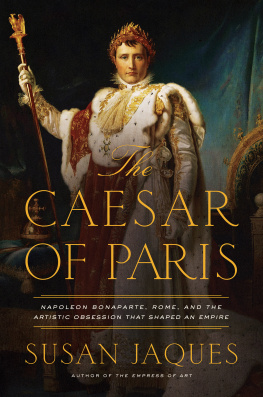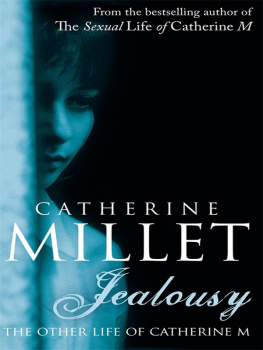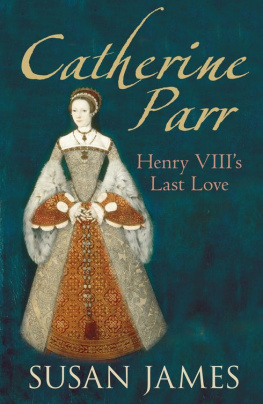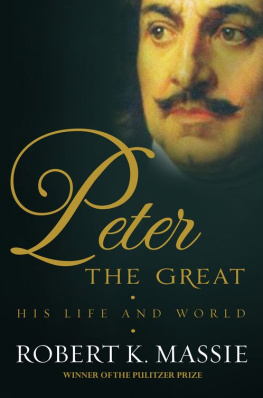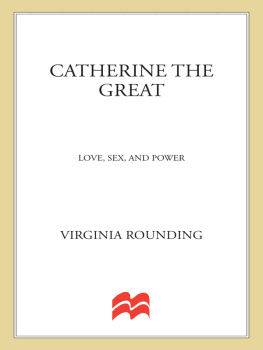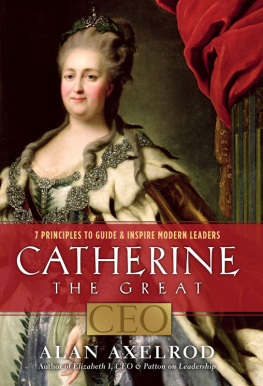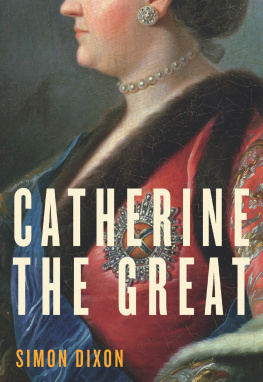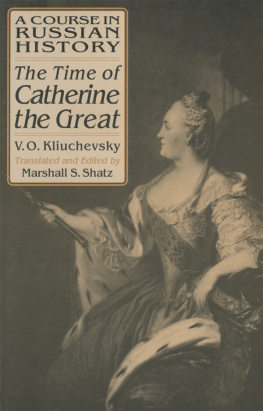
The
EMPRESS
of ART
CATHERINE THE GREAT AND THE TRANSFORMATION OF RUSSIA
SUSAN JAQUES

THE EMPRESS OF ART
Pegasus Books LLC
80 Broad Street, 5th Floor
New York, NY 10004
Copyright 2016 by Susan Jaques
First Pegasus Books cloth edition April 2016
Interior design by Maria Fernandez
All rights reserved. No part of this book may be reproduced in whole or in part without written permission from the publisher, except by reviewers who may quote brief excerpts in connection with a review in a newspaper, magazine, or electronic publication; nor may any part of this book be reproduced, stored in a retrieval system, or transmitted in any form or by any means electronic, mechanical, photocopying, recording, or other, without written permission from the publisher.
Library of Congress Cataloging-in-Publication Data is available.
ISBN: 978-1-60598-972-3
ISBN: 978-1-68177-114-4 (e-book)
Distributed by W. W. Norton & Company
For Carlene Jaques
in loving memory
CONTENTS
C atherine the Great is one of historys most compelling figures: a tenacious German princess who seized Russias throne from her husband just days before his accidental strangulation. Inspired initially by the progressive ideas of the French Enlightenment, Catherine II went on to rule her adopted country for thirty-four years in a less-than-enlightened fashioncrushing the Turks, peasant rebellions, and any other Romanovs with claims to the throne. Outwitting her political rivals, she transformed Russia from a northern backwater to global superpower, snatching large parts of Poland and annexing the strategic Crimea Peninsulathe basis for Vladimir Putins recent land grab. Styling herself heir to her illustrious grandfather-in-law, Peter the Great, she Westernized Russia while celebrating its language, religion, and history.
Catherine shocked contemporaries with her sexually liberated lifestylefrom extramarital affairs and illegitimate children to a string of official favorites. God grant us our desires, and grant them speedily was her favorite toast, a reference to her cougar-like appetite for handsome young men. With enough power, intrigue, and passion for several lifetimes, Catherine II has been the subject of numerous biographies. Volumes of what she called her scribblingincluding three memoirs and correspondence with philosophers, art advisers, and favoriteshave given historians plenty of material to work with. Writing in French, German, and Russian, Catherine reveals public and private personas often at oddsat once imposing and down-to-earth, extravagant and hardworking, sensual and prudish, witty and emotionally needy.
Focused on Catherines brazen imperialism and sensational private life, historians have paid less attention to her other passionarguably her most lasting legacy and the area in which she triumphed as an enlightened ruler. Catherine the Great was one of historys greatest patrons of art and architecture, both in scale and quality. Under her patronage, Russia experienced a cultural renaissance the likes of which Europe hadnt seen since the reign of Englands Charles I. Her unprecedented spending spree brought thousands of Old Master paintings, sculptures, furniture, silver, porcelain, and engraved gems to Russia. She left her adopted country the world-class Hermitage Museum and transformed Russias swampy capital into a sophisticated cultural center.
From the start, Catherine mobilized art and architecture to legitimize her shaky claim to rule and reinvent herself as Russias enlightened ruler. Knowing that paintings were synonymous with power, Catherine quickly amassed a collection of the stature that had taken France, Austria, and Saxonys royal houses centuries to assemble. By snatching up entire collections once owned by Europes rich and powerful, she declared Russias ascending wealth and prestige. To enhance her courts cachet, Catherine entertained frequently and lavishly. If the French court was dining on Roettiers silver and Svres porcelain at Versailles, she would set an even more magnificent table for her guests at the Winter Palace.
As G. N. Komelova writes, Her absolute power allowed her to use the arts and architecture as a weapon of state policy, for self-glorification and self-assertion. Indeed her patronage of the arts was crucial to fostering her image as an enlightened monarch.
In fact, Catherine applied the same energy and ambition to art and architecture that she did to governing. The glutton soon bought Lignes art collection. She read widely on art and architecture, collected engravings and drawings, and even produced her own architectural drawings. An armchair traveler, Catherine turned to her exquisite albums of prints and engravings for inspirationfrom an exact replica of Raphaels Vatican Loggia for the Winter Palace to Josiah Wedgwoods Green Frog Service decorated with hundreds of views of England. Combining her knowledge of antiquity and passion for engraved gems, Catherine ordered the extraordinary Svres Cameo Service with mythological and historical scenes. Before long, Catherine was offering advice to her talented art scouts.
Catherines collecting debut came in 1764, the same year she placed her former lover, Stanislaus Poniatowski, on Polands throne. Motivated more by revenge than connoisseurship, she plucked up a paintings collection earmarked for Prussias Frederick the Great. Though the works turned out to be mixed in quality, their arrival in St. Petersburg inspired Catherine to launch an imperial picture gallery. Impatient for masterworks, Catherine set her agents loose in the auction houses of Paris, Berlin, and Amsterdamconnoisseurs like Russian diplomat Dmitry Golitsyn, Denis Diderot, and Frederic Melchior Grimm. In addition to buying Old Masters, Catherines scouts commissioned contemporary artworks on her behalffrom Jean-Antoine Houdons sculptures of Voltaire and history paintings by Sir Joshua Reynolds to neoclassical pictures by Anton Raphael Mengs and Angelica Kauffman.
Catherine collected on a scale so shocking that England and France issued laws forbidding the export of large quantities of art. For more than three decades, she pursued art as a form of diplomatic warfare using the same cunning tactics and surprise attacks of her military. An opportunist, she exploited the misfortunes of othersincluding those of political rivals Frederick the Great and the Duc de Choiseul, Frances anti-Russian war minister. By targeting the cash-strapped heirs of celebrated private collectors, Catherine amassed the prestigious collections of Saxon Richelieu Heinrich von Brhl, Frances treasurer Pierre Crozat, and Englands longest-serving prime minister, Sir Robert Walpole.
Adding to Europes anxiety, Catherine was snatching up its art treasures at the same time she was grabbing territory. Two wars against the Ottoman Empire in 176874 and 178792, and the annexation of the Crimean Peninsula in 1783 gave Russia a foothold in southeastern Europe and the northern shores of the Black Sea. Three partitions of Poland added another 185,000 square miles to Catherines empire, including much of Ukraine, Belarus, and Lithuania, and increased Russias population from 23 to 37 million. Russia became a global naval and commercial power and Catherine found herself running one of the worlds wealthiest empires.
As she did with art, Catherine used architecture to increase Russias prestige. She began by constructing granite quays on the Nevas mud-clogged banks. Building is a devilish affair, Catherine confided to her Paris-based agent Melchior Grimm. It eats money and the more one builds, the more one wants to go on; it is an illness like drunkenness. To display her growing artworks in stylish fashion, Catherine added the Small and Large Hermitages to the Winter Palace.
Next page

